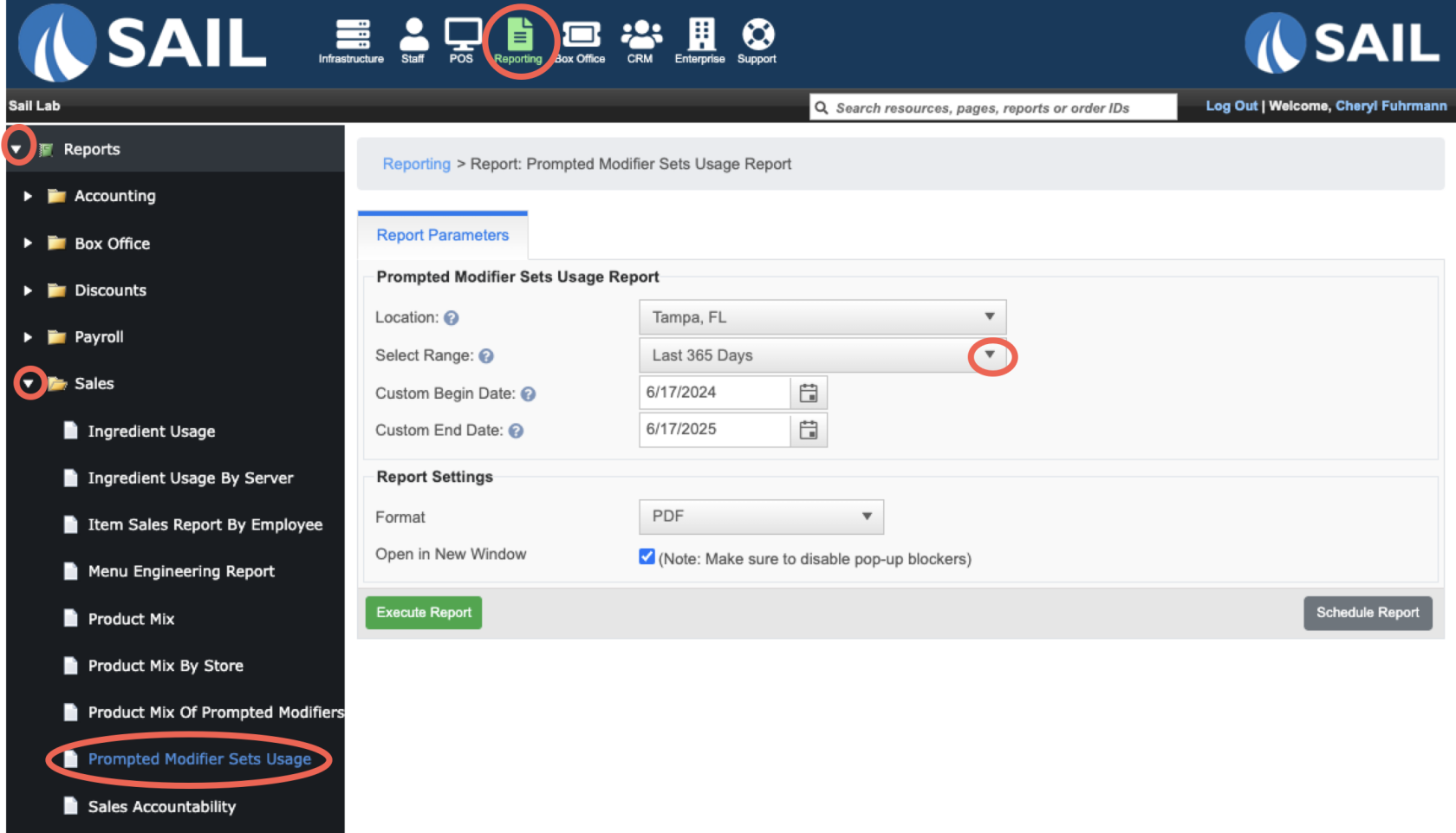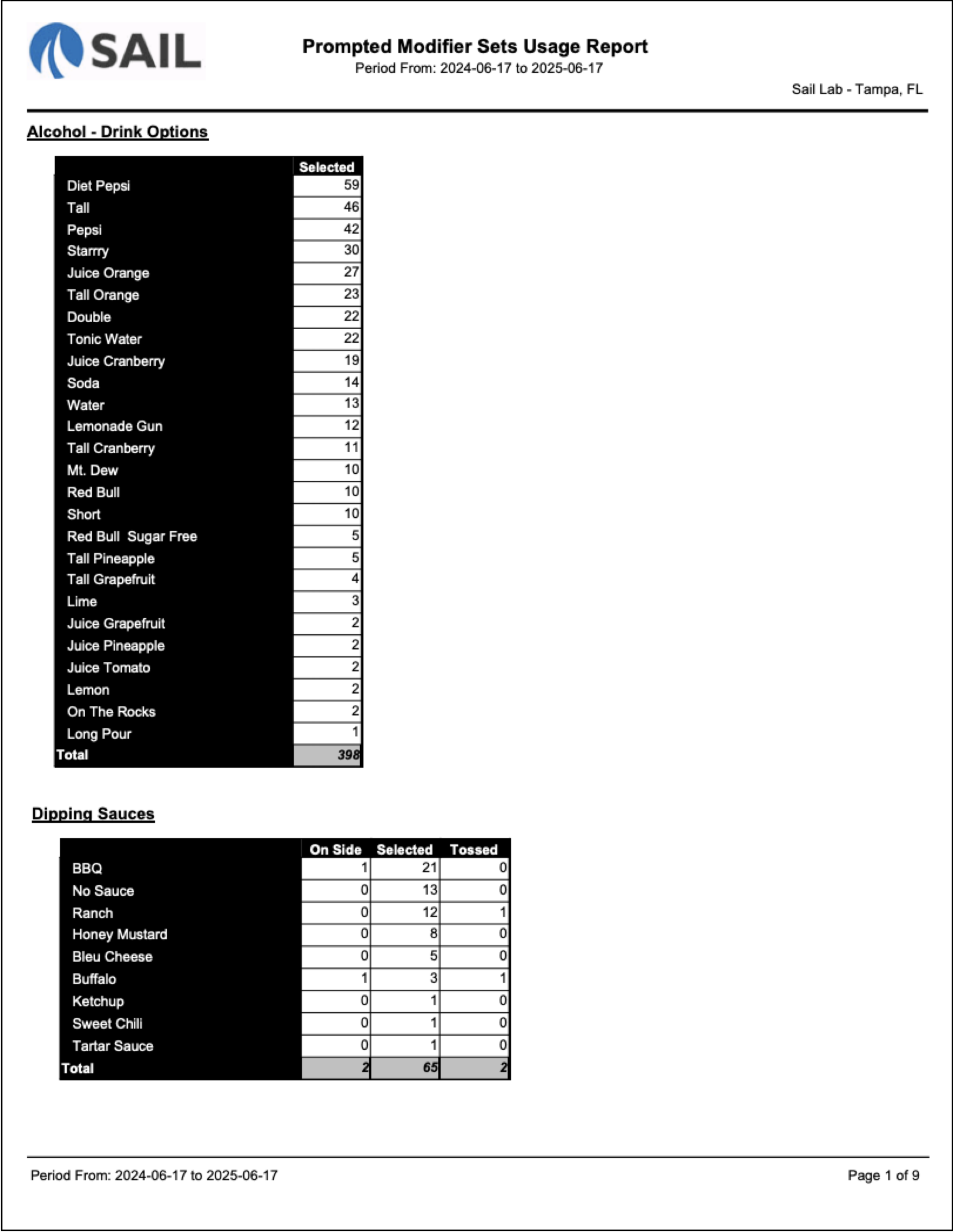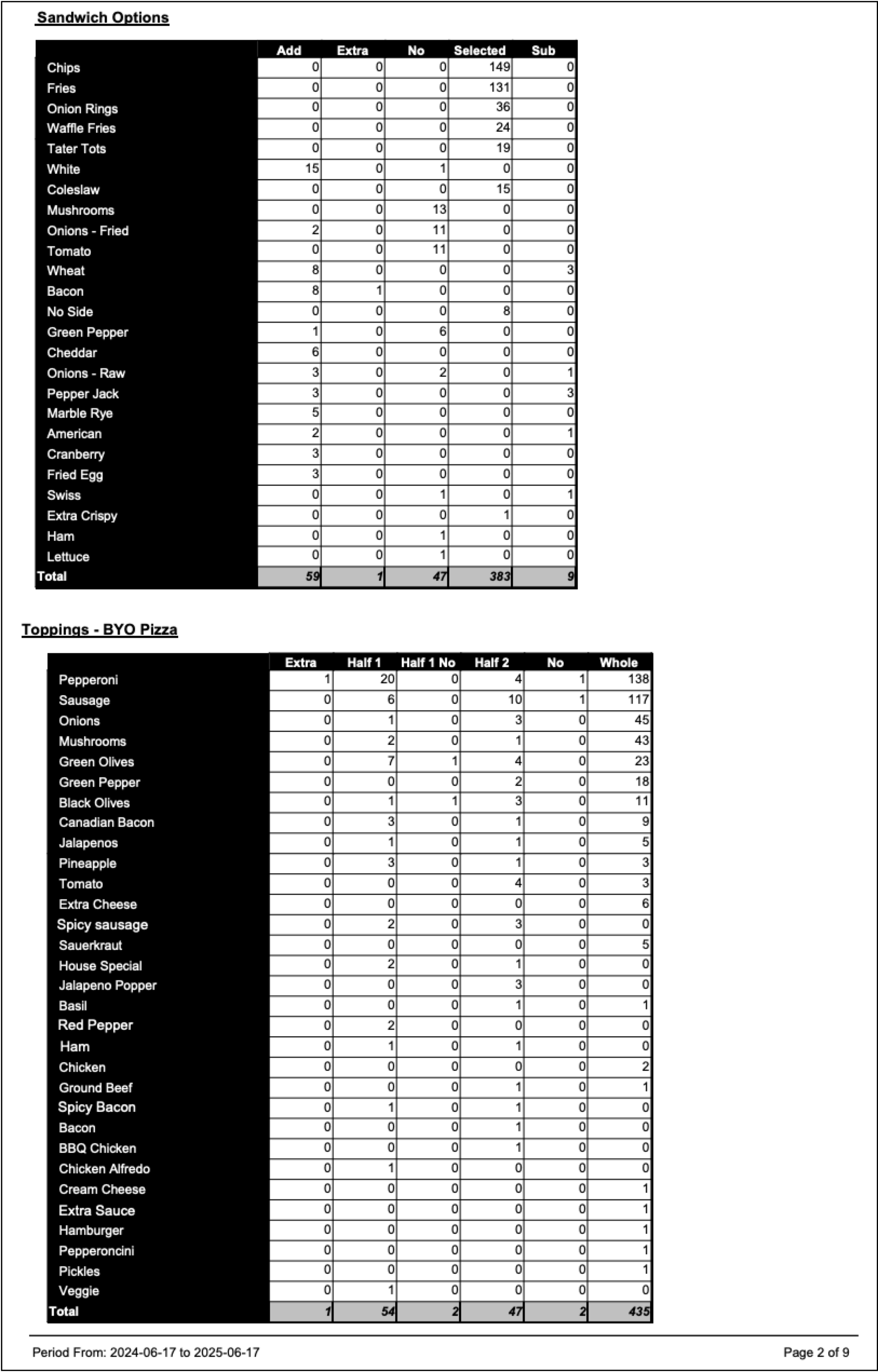Prompted Modifier Sets Usage Report
The Prompted Modifier Sets Usage Report shows how often specific modifier choices are used when employees ring in items. Since each modifier set is preconfigured in the system and attached to items, this report helps you see the most commonly selected options within each set.
This is especially useful for:
-
Identifying top-chosen options (e.g., which drink sizes, dipping sauces, or toppings are most popular).
-
Spotting under-used or rarely chosen modifiers that may need review.
-
Confirming employees are making selections consistently when prompted.
Where to find the report
- Backoffice --> Reporting --> Reports --> Sales folder --> Prompted Modifier Sets Usage --> Select Date Range --> Execute
What it looks like
Report Parts
Sections
-
The report is broken down by Modifier Set.
-
Example: Alcohol – Drink Options, Sandwich Options, Toppings – BYO Pizza, Dipping Sauces.
-
-
Each set lists all the modifiers configured within it, along with how many times each option was selected.
- At the bottom of each section is a Total row, which shows the sum of all selections within that set.
Columns
The headings across the top vary depending on how the modifier set is configured. Examples include:
-
Selected – Total number of times the option was chosen.
-
Add / Extra / No / On Side / Sub – Options that track specific modifications, such as adding extra cheese, removing an ingredient, or putting sauce on the side.
-
Whole / Half 1 / Half 2 – Special tracking for pizza toppings and other items where modifiers can apply to portions.
-
Tossed / On Side – Additional custom options depending on how the set was built.
-
Custom Names – Some stores create unique labels that reflect their menu setup.
Because each modifier set is unique, you’ll see different column names in different sections of this report.
How to Use This Report
-
Look for trends in customer preferences (e.g., if “Fries” is consistently the top sandwich side, or “Pepperoni” the top pizza topping).
-
Monitor low-use options to decide if they should be adjusted or removed from menus.
-
Use the data to manage food costs — knowing which add-ons or extras are most popular can help with prep and ordering.
-
If unusual results show up (like high “No Sauce” selections), it can be a sign to double-check recipes, menu descriptions, or employee training.




No Comments